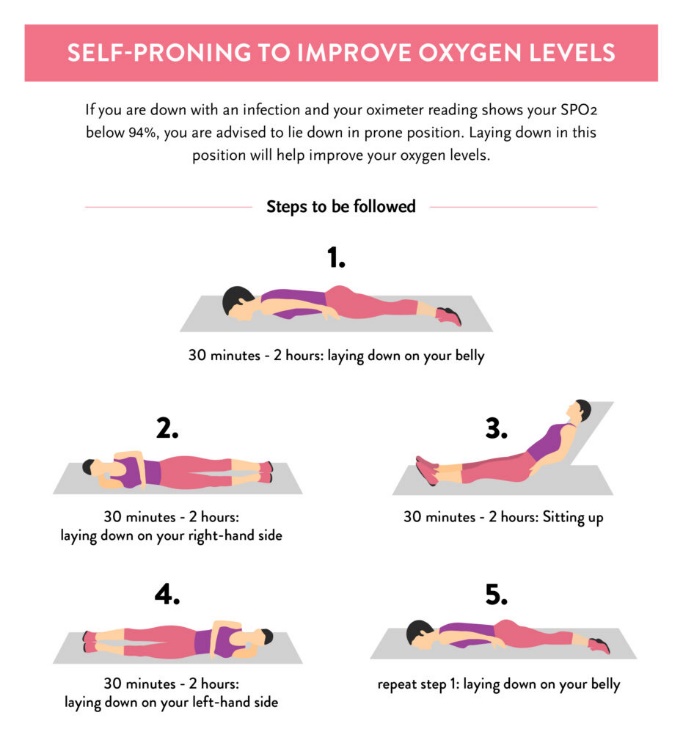
Blood oxygen level, also know as oxygen saturation, is a percentage that represents the total amount of oxygen circulating in the blood. This amount is obtained by comparing the quantity of circulating hemoglobin that is linked to oxygen with the amount that is not linked to oxygen. Hemoglobin is a protein present in the red blood cells, which is responsible for transporting oxygen from the lungs to various parts of the body.
Ideally, blood oxygen level should be as close to 100% as possible, generally above 95%, as this indicates that there is a good amount of oxygen circulating. Nevertheless, people who have chronic respiratory problems such as asthma or Chronic Obstructive Pulmonary Disease (COPD) can present lower saturation levels (88-90%) without that being a reason for concern.
When saturation level decreases very quickly or when it's under 85-90% this may signal a serious health problem, such as pneumonia, heart failure, or anemia, which needs to be diagnosed at the hospital and treated as soon as possible.
Why oxygen levels are important?
Oxygen saturation is considered one of the most important parameters in medical examination, together with heart rate, blood pressure, respiratory rate, and body temperature. This is because the blood oxygen level is directly linked to what happens in the body, being low when there is a health problem that may be serious, such as:
Breathing problems: asthma, COPD, emphysema, embolism, cystic fibrosis;
Heart disease: heart failure, or congenital defects;
Anemia.
Besides aiding in the diagnosis of some diseases, oxygen saturation can also be used to monitor how treatment for a determined condition is going, as well as helping assess the general health of a hospitalized patient.
Relationship between COVID-19 and oxygen saturation
COVID-19 is an infection that mainly affects the respiratory system, causing symptoms such as intense cough, tight chest, difficulty breathing, and fatigue. Thus, it's normal for the oxygen level to go down slightly in people infected with COVID-19, as the lungs are affected and cannot exchange oxygen properly.
It is expected that oxygen saturation in people with COVID-19 would be above 90-95%, so if the level is below that, it's important to be examined by a health professional who may choose to start treatment with oxygen therapy in the hospital.
In more serious COVID-19 cases, blood oxygen levels can reach saturation below 80%, in which hospitalization is usually needed, generally at an ICU.
How to measure oxygen level
Blood oxygen level can be assessed through a test called oximetry. This test can be done in two ways:
Pulse oximeter: it's the most common and easy way to measure oxygen saturation. It consists a device, an oximeter, that is placed on the tip of the finger. This device will measure oxygen levels without any type of prick or blood sample;
Arterial blood gas: this is less common, but it's the most precise way of knowing the exact amount of oxygen level in the blood. It's a technique carried out in a hospital in which the doctor gets an arterial blood sample that will be analyzed at the lab. Arterial blood gas also gives other important parameters such as blood pH, partial pressure of oxygen (pO2) and partial pressure of carbon dioxide (pCO2).
Oximetry tests can be done at home with the use of a pulse oximeter, which can be bought at a drugstore and some grocery stores. If using one at home, please make sure your hand is warm and avoid wearing nail polish, in order to guarantee a more precise result. Learn more about oximetry tests and how to measure correctly.
Normal blood oxygen levels
Normal blood oxygen levels vary according to a person's health history. For people who are apparently healthy and do not have a history of associated diseases, oxygen levels are considered normal when above 95% and it's normal to see saturation levels above 98% most of the time.
However, for people who have a history of respiratory diseases, such as COPD, or asthma, oxygen saturation can vary between 88 and 95%. Blood oxygen levels below 95% should always be assessed by a doctor who can indicate which interval to consider normal in each case, depending on the person's health history.
How to Improve spo2 levels
In a healthy person, when oxygen saturation is low, between 90 to 95%, that generally means there is some catarrh in the airways which may be reducing the amount of oxygen that gets to the blood. That's why this decrease in saturation levels is common when you have flu or a cold.
When that happens there are some simple measures you can do to help increase blood oxygen levels. These include:
Coughing, to mobilize the secretions and ease oxygenation;
Siting up right, instead of lying down, in order to reduce pressure on the lungs;
Take a deep slow breath, to increase the amount of air that arrives in the lungs;
Go somewhere that is well ventilated, to guarantee a greater amount of oxygen;
Avoid very hot or very cold places, as these can hinder breathing.
However, when saturation is very low, under 85%-90% this may signal a more serious health problem, such as pneumonia. Therefore, it is recommended that you go to a hospital or call for medical help to have a more detailed assessment. While you wait for medical help you can experiment with the techniques above to try and increase saturation slightly and decrease respiratory effort.
It's important to remember that there are several chronic conditions that decrease saturation without indicating an emergency, which is the case of asthma, anemia, COPD, emphysema or heart problems. In these cases, it's important to speak to a doctor to understand what saturation levels may be considered normal.

Leave a Reply